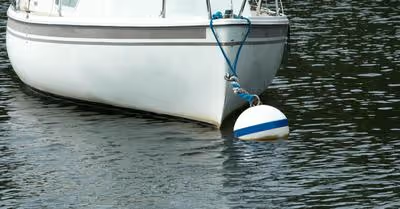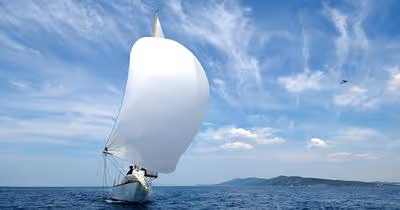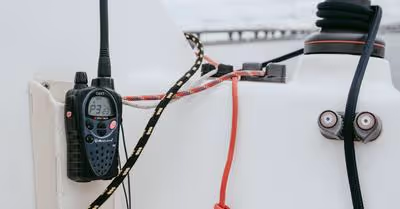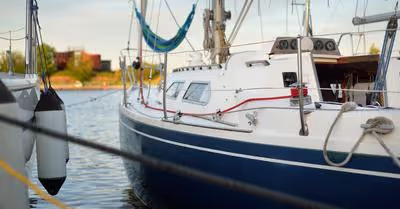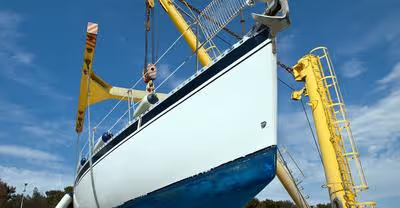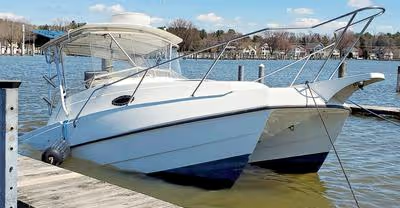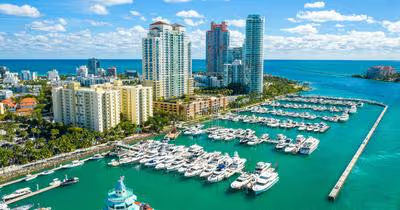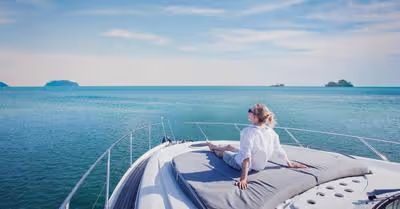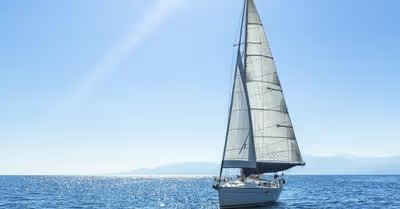Table of Contents
Why Is 35 to 45 Feet the Ideal Size?
We believe that sailboats measuring 35-45 feet are the ideal size. This is because sailboats that measure 35 to 45 feet are good with steering and keep well at sea. Such boats usually have in-built self-steering machinery, making it easier to manage them in rougher waters.
Boats of this size will also maintain a good speed – not so fast that it gets out of control, nor too slow. However, boats smaller than this range are likely to sail at a much slower pace unless they are very long, making them more difficult to handle.
On the other hand, bigger boats will naturally have more weight, which will slow them down. Bigger boats are typically only able to reach good speeds when there are high winds, but this makes the boat harder to handle, especially for a sole sailor.
Boats are also easier to anchor or dock between this range, and the slips needed for this are easily available, especially since the 35-45 feet range is a good size for sturdiness. While smaller boats are easy to dock and anchor at marinas, they are not necessarily safe when unanchored, especially when the weather conditions are not the best.
It can be much harder for larger boats to find a slip the right size, and docking at a marina is generally more expensive. It is also much more difficult to anchor a larger boat on your own, even with assistive equipment.
It is also much easier to handle a boat between this range in open waters. Because of strong winds and the large waves, smaller boats pitch a lot, which can make the ride very rough, even for a very competent and experienced sailor. On the other hand, larger boats don’t pitch as much, but they go very slowly unless there is a lot of wind.
Boats between 35-45 feet can handle the open waters well. While there is some pitching, it is kept to a minimum because of the size. Because the boat isn’t too big, it can also sail smoothly at a decent speed.
Another notable advantage of such boats is that they have ample storage space. It’s enough to store items for trips up to a month or so, which is the amount of time it will usually take for sailing trips. Smaller boats can reduce the amount of storage space by up to 4 tons, which greatly reduces how much you can keep with you. You may not even be able to store items to last you a week.
For most trips, you’d need storage for fuel, oars, life jackets, equipment to keep you safe during any storms, spare parts for engines, and other such things. Along with that, you also need storage for food and water, and any other necessities like clothes, etc.
Keeping all of the above in mind, boats that measure 35 to 45 feet have the right amount of storage space while also being easy and safe to handle on your own.
Larger boats have the opposite problem of having too much room. You may find that you won’t even be using all the space available to you, even if you’re going on a very long trip. At the end of the day, it will just be wasted space, and the size of the boat would mean that you’d be having trouble handling a boat of a size you don’t even need.
Other Factors Influencing Boat Size
While, on average, the right boat for a single person does fall within the range mentioned above, the best boat for you also depends on your needs and capabilities. Let’s look at some other factors to consider around what size boat you can handle without compromising on any of your sailing adventures:
The Activities
What kind of activities you want to have on your boat will determine how big a boat you want to have. Of course, if you’re alone, you’re probably not planning on having a party on board, but some sailors may like heading out on the open ocean during their trip. If your ocean sails are limited to the daytime, you can do well enough with a smaller boat – even 15 feet is enough to meet your needs.
On the other hand, if you’re planning on sailing on the open ocean during the night, or even if you’re making a journey across it, your boat would ideally be bigger. Not just because smaller boats are at greater risk in open waters, but also because a trip like that would be much longer. You’d need to have a decent amount of storage space to be able to get by.
Autopilot and Downtime
If you’re going to be sailing for a long time in areas where anchoring is not possible, you’d want a boat capable of managing its own navigation for longer periods. Many boats nowadays are equipped to do this, but not all of them can handle it well when left on autopilot.
In fact, when it comes to stability, larger sailboats are the better choice since they can navigate better when you leave them on autopilot. While handling the boat on your own is fun, especially when you start out, your boat should still be able to navigate itself when necessary to save you a lot of trouble.
Larger boats also come with in-built systems, which cut down on how many adjustments you need to make your sailing trip more efficient and safer. Not to say that smaller boats have no self-navigational capabilities, but they are significantly less than larger ones.
Speed
If you’re sailing on your own, ideally, you’d want to get to your destination as fast as possible before bad weather has a chance to set in. Therefore, if you’re on your own, you also want your boat to have a good speed. In general, longer boats tend to be faster and smoother to sail.
Both of these characteristics are important – you don’t want a fast boat that pitches a lot, and you also don’t want a very slow boat that sails smoothly. You’d find smaller boats are more difficult to manage if speed is your priority, but if you do need to use a small boat, it’s best to go with a longer one.
In fact, racing sailboats are often light and small, meant for faster speeds. However, these boats are not designed to sail in open waters and have very little storage space.
As a rule, a longer boat will sail faster, but speed should not be your only concern on an open-waters sailing trip, so a medium-sized boat is generally your best option.
The Anchor
Another factor to keep in mind is the anchor. If your anchor isn’t big and strong enough to keep your sailboat safe during a storm, you should definitely get one that is. However, at the same time, since you’d be sailing alone, another aspect to consider is whether or not you’d be able to bring the anchor back on deck on your own.
Knowing what size anchor can keep you safe while still being manageable enough for you to handle on your own can help you figure out what size sailboat you want to go with.
Sailboat Configurations
The maneuverability of your boat is another major consideration to make. What happens if you’re stuck in a storm and need to maneuver your sailboat to safety? Or perhaps if you have to get it to the docks when there are very strong winds? If your boat is too big for you to maneuver on your own, it’s definitely too big for you to head out with on your own.
You want a boat that can do all the maneuvering single-handedly and help you decide on the right size for your boat.
Boat Hardware
If you haven’t considered the hardware of your sailboat for a solo trip, now’s the time to do it. Most manufacturers now produce very affordable hardware which can make a solo trip very easy, but for that, you’d have first to make sure that your boat does come equipped with it. Many technologies that were initially used only for racing boats are now being used in your average sailboat as well.
Plenty of boats come with helpful systems like autopilots and navigation or even wind instruments that make your solo trip much safer and easier. If your boat is not up to the mark in terms of hardware, you should consider getting one that is.
Sometimes this will mean a bigger boat or a smaller one, but when deciding on what boat is right for you, you want to opt for one that makes sure you have all the necessities in place, with some extra features depending on your priorities.
Safety
If you’re heading out on any trip alone, be that sailing or anything else, safety should be one of your top priorities. Being without a crew that can help during unexpected circumstances means that you are always at a greater risk on water.
This is why the right sized boat for you is one that can sail well in rougher waters, can handle all your food and water storage with spares, and also has all the safety equipment in place to keep you from falling into any sort of trouble when you’re out at sea. Some boats also come with safety devices you can use even in calm waters. It’s always better to be safe than sorry!
On top of that, your boat should also have the right communication abilities, such as wi-fi, satellite phones, or radio signals. Smaller boats sometimes do not have these, so make sure that whatever size boat you go for has adequate communicative technology.
At the end of the day, the size of your boat will depend on what kind of sailing trip you want to have. Keeping in mind all the above and the fact that the best balance for a solo sailor is a boat between 35 to 45 feet, you can easily pick out a boat for yourself! Happy searching!
Recent Articles



